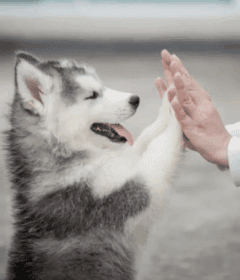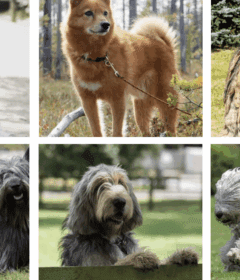Set Your Puppy Up For Success

Set Your Puppy Up For Success – Overview
Adding a pet to the household can be an exciting and rewarding experience for the entire family, although it can be an exhausting. And, worse case, you can create a life long problem. Preparation and patience are keys to successfully integrating a puppy into your home. If possible, at least one adult in the family should take a few days off from work to help socialize and train the puppy after his arrival as the puppy should not be left for more than a couple of hours – especially if crating.
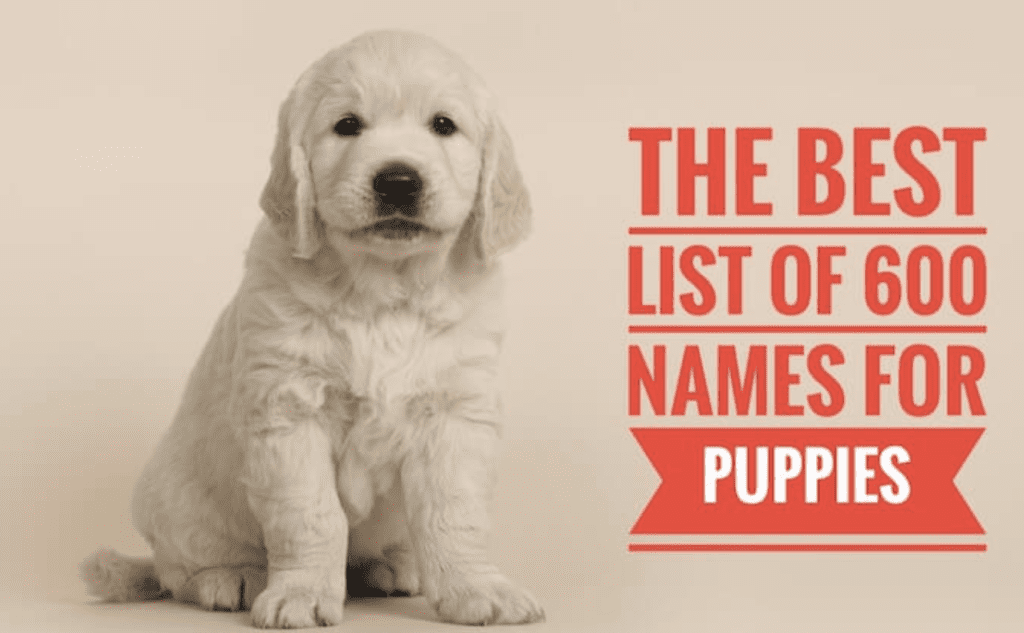
How to Name a Puppy
Ideal names to give a dog a name are comprised of two syllables; some examples of this are Bella, Buddy, Cosmo, Lucky, Rocky.
Trainers say that dogs will learn and quickly respond to these types of short sounds (two syllables), making training easier and long term control of the dog easier. Note: one and three three syllable words can be confusing for dogs. Longer names can be clumsy or confusing, or can be mispronounced by others who are involved in the dog’s life, making consistent obedience tricky.
Choose a two-syllable name for your dog to avoid confusion with verbal commands that should just be one syllable such as sit, down, off, crate and stay.
Tips for How to Name a Puppy
Choose a name that ends with a vowel
Stick with two syllable names
Avoid names with negative connotations
Don’t pick a name that sounds like a command
Choose a name that’s unlike your other pets
Think of your dog’s personality
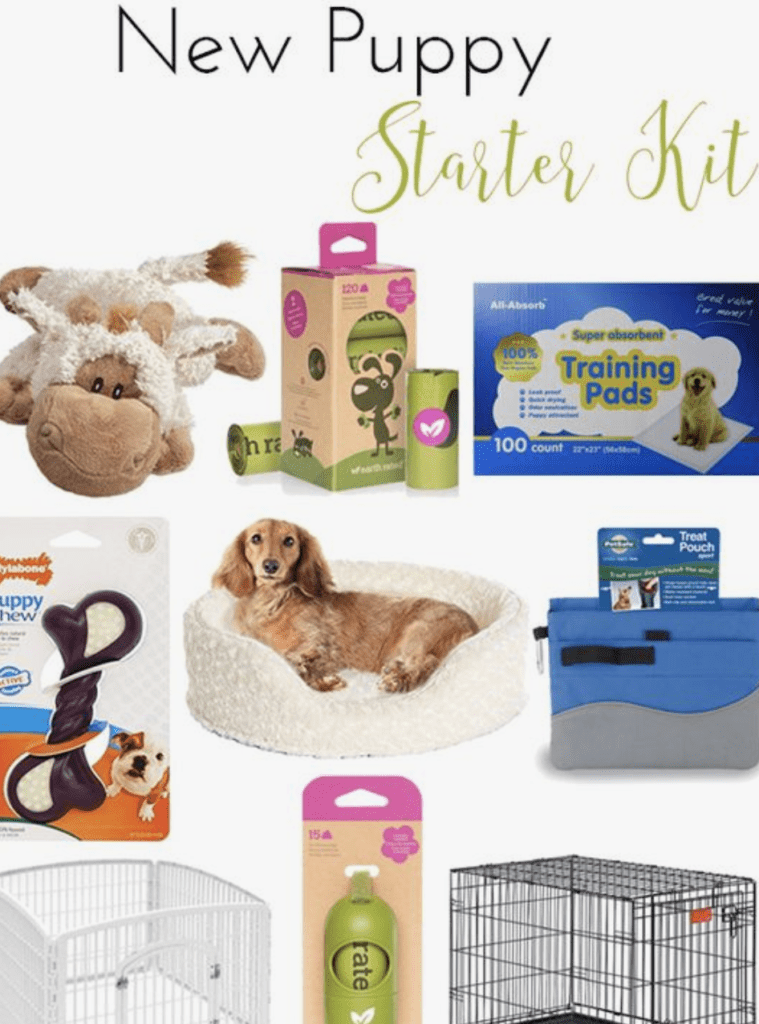
Mandatory Supplies for Your Puppy
Make a checklist for the essential supplies that you’ll need during the first week and gather them ahead of time. If you are a first-time dog owner, talk with a veterinarian, dog walker, trainer, breeder or friend or family member who has experience with dogs.
New Puppy Starter Kit
Puppy-safe crate with a removable bottom for easy cleaning.
Pet carrier of the appropriate size.
Blanket or bedding.
Adjustable gates to bar the puppy’s access to the entire house.
Leash, puppy collar and identification tags.
Dishes for water and food.
Brush, nail clippers and other basic grooming tools.
Cleaning solutions designed for pet waste, because accidents will happen.
New toys for the puppy, so he doesn’t have to share with other dogs.
Set Your Puppy Up For Success – Best Food & Water Bowls for Puppies
There’s many things to consider when shopping for food and water bowls for your puppy, including whether or not your dog needs an elevated bowl, a bowl with a non-slip mat, or perhaps a slow feeder bowl.
The AKC Shop includes a starter set of all-natural treats that are made in the USA, plush and spiky toys, and the AKC’s digital guide to owning a new puppy.
Best Food & Water Bowls for Puppies >>
Set Your Puppy Up For Success – Best Puppy Beds
Dog beds give your pup a space to call his own and relax (plus they can also keep him off your couch or bed). A dog bed for your puppy will also allow him to keep comfortable and warm, especially compared to lying on the floor.
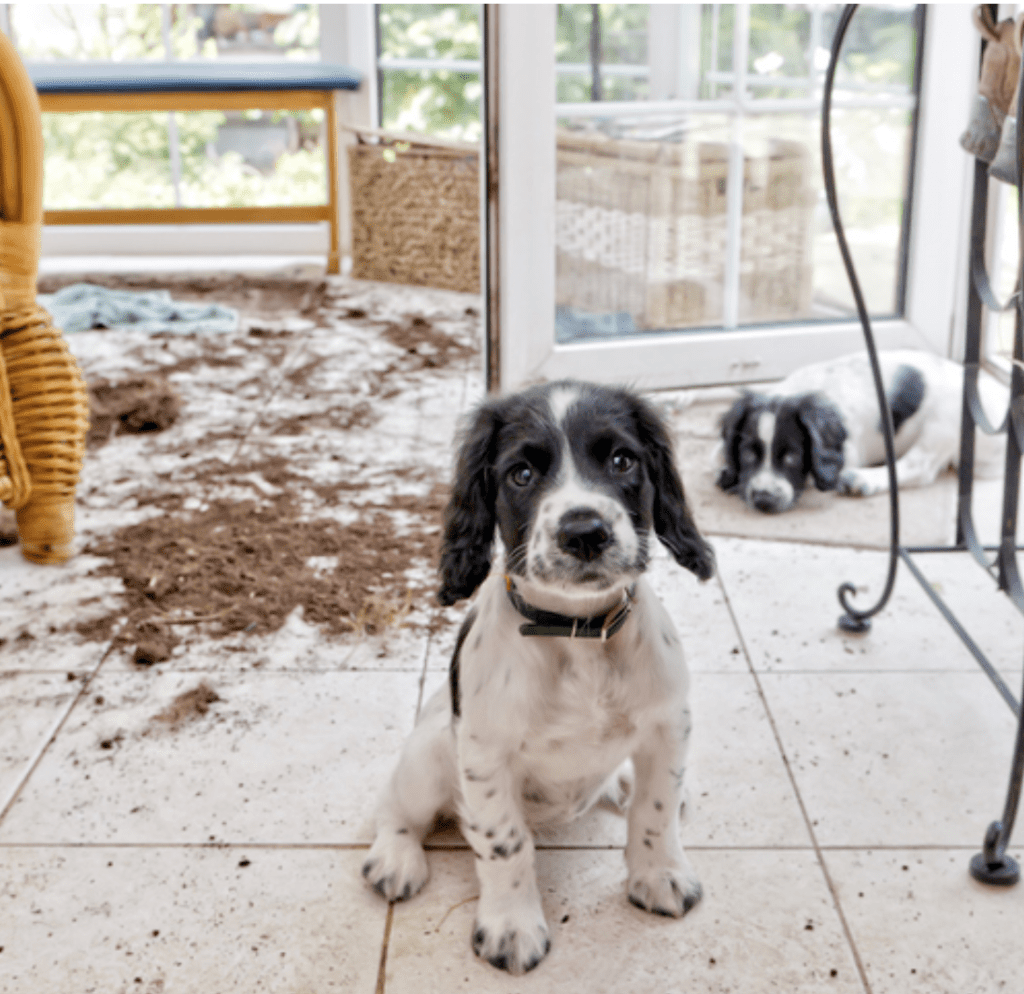
Puppy Proofing the Inside of Your Home
Puppies are energetic and clumsy, so expect him to knock a few things over during his first few weeks at home. Select a room for the puppy where he will be isolated from other pets at first and away from breakable items. Remove all dangers from the room, including furniture with sharp corners, toxic cleaning solutions, plants and small objects that could be swallowed.
TIP: Make sure all of your pets have current vaccinations and are in good health before introducing a new puppy.
Unplug electrical cords, move them out of reach, or string them through cord concealers. These chewing hazards can cause burns to the mouth or electrical shock.
Avoid feeding food from the table. Pups may look adorable as they beg for food, but many human foods are not good for them. Pay special attention to sugarless gum, chocolate, raisins, and other foods that are especially poisonous to dogs.
Keep cleaning supplies in high cabinets or secured behind doors with childproof latches. When using them, make sure that the puppy is kept out of the area, so he won’t be affected by the vapors given off by chemicals.
Put all medications away. Avoid keeping medications, even in pill bottles or dispensers, on low tables, bathroom counters, or night tables, where the puppy can easily get to them.
Keep toilet lids closed, so the puppy won’t drink out of the toilet or fall in.
Keep doors and windows closed at all times, so the puppy can’t escape or fall out, and secure the cords that raise blinds, so they won’t get caught around the puppy’s neck.
Put away small items that are choking hazards — such as coins, paper clips, rubber bands, and jewelry — to prevent the puppy from choking on them.
Keep all sharp objects out of your dog’s reach. This includes knives, scissors, razors, and tools.
Secure trashcans. Puppies are attracted to the smells coming from garbage, which can upset their tummies or even be poisonous.
Move poisonous houseplants, so the puppy can’t eat them.

Puppy-Proofing the Outside of Your Home
Fence the yard, if possible. It’s best to have a fence that is high enough to prevent the puppy from jumping over it, with no holes to crawl through.
Remove toxic plants in your yard to prevent your pup from mistaking them for a snack.
Put a fence around in-ground pools. Pools are a big hazard for puppies. A fence surrounding the pool will prevent the puppy from accidentally falling in. You or a dog trainer can teach your pup pool safety, as well.
Designate a puppy area. Set aside a portion of the yard for the puppy to use as his bathroom area.
Keep the lawn trimmed and brush under control. Ticks are more likely to hide in tall grasses and latch onto your pup.
Keep your dog away from the yard if it has recently been treated with fertilizers, pesticides, or insecticides. Try to avoid using insecticides because the chemicals can be very harmful to your puppy.
Be wary of heat. Avoid keeping your dog outside when it is hot, and always have shade and cool water available
Clean up after your puppy to be sure he won’t try to eat his own feces.
Supervise your puppy. Young puppies should not be left outside alone. This is the time to play with them and train them, and to protect them from predators, heatstroke, and other hazards.
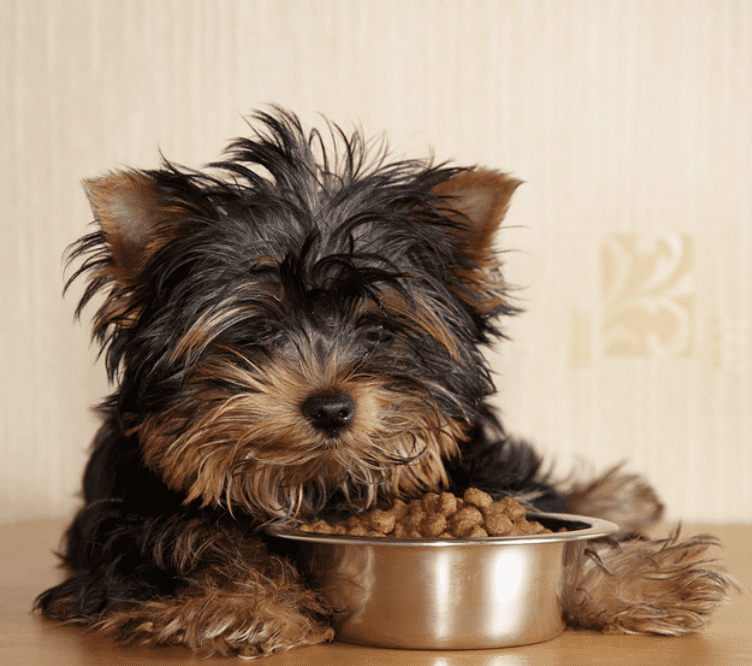
Puppy Diet
Most puppies are around 2 months old when they are sold or put up for adoption. At this point, they should be weened and able to consume solid food. Talk to the previous owner or caretaker to determine what brand and type of food he has been eating. Ask your veterinarian to recommend a wholesome food brand for your puppy. If you wish to transition to a new type of food, gradually introduce the new brand into each meal in increasing amounts.
AKCs First-Year Timeline For Feeding Your Puppy
6–12 Weeks
Growing pups should be fed puppy food, a diet specially formulated to meet the nutritional needs for normal development. Feeding adult food will rob your puppy of important nutrients. Four feedings a day are usually adequate to meet nutritional demands. Large breeds should be fed unmoistened dry food by 9 or 10 weeks; small dogs by 12 or 13 weeks.
3 – 6 Months
3–6 months: Sometime during this period, decrease feedings from four to three a day. A pup should be losing her potbelly and pudginess by 12 weeks. If she is still roly-poly at this age, continue to feed puppy-size portions until body type matures.
6–12 Months
6–12 months: Begin feeding twice daily. Spaying or neutering lowers energy requirements slightly; after the procedure, switch from nutrient-rich puppy food to adult maintenance food. Small breeds can make the switch at 7 to 9 months; bigger breeds at 12, 13, even 14 months. Err on the side of caution: Better to be on puppy food a little too long than not long enough.
After age 1: Most owners feed adult dogs two half-portions a day.
Set Your Puppy Up For Success – Good Puppy Meal Habits
Avoid giving puppies scraps from the kitchen or dinner table, as this only reinforces begging and stealing habits. Feed your puppy three times a day on a schedule to create consistency for your new pet. Portion meals according to the instructions on the food package for your dog’s age and weight As he gets older, you can safely switch to two meals a day, according to Partnership for Animal Welfare. Feed your puppy in a separate room for other animals to prevent competition and food aggression.
Like human babies, puppies start out needing many small meals a day, of a food formulated for their special nutritional requirements. Most, but not all, dogs finish meals quickly. To discourage picky habits, feed at regular times in regular amounts and don’t leave food down for more than 10 to 20 minutes.
Set Your Puppy Up For Success – Developing Good Puppy Bathroom Habits
Chances are your new puppy will soil the house and his crate as he adjusts to his new home. Develop good habits for yourself and your pet with simple strategies, such as:
Praise and treat your dog for relieving himself outdoors rather than reprimanding mistakes.
Take him outside every hour or two throughout the day; encourage family members to help.
Let him out about 20 minutes after meals and feed him several hours before bed.
Throw a ball or encourage activity for several minutes if he doesn’t go the bathroom.
Crates are an important puppy house training tool that can make your life easier.
Puppy pads and paper training offer a temporary solution to house training.
Consistency, attention, understanding, and patience are all key in house training.
Dogs are den animals and will seek out a little canine cave for security whether you provide one or not. That makes it relatively easy to train your dog to love her crate.
How a Crate Helps House Training a Puppy
The principle behind using a crate for house training is that dogs are very clean creatures and don’t like a urine-soaked rug in their living spaces any more than you do. It’s important that the crate is the right size—just large enough for the dog to lie down, stand up, and turn around.
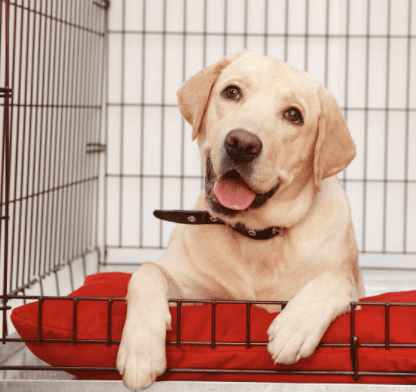
Crates for Puppies
If it is too large, the dog will feel that it’s OK to use one corner for elimination and then happily settle down away from the mess. Many crates come with partitions so you can adjust the size as your puppy grows.
When she feels an urge, the puppy will usually let you know by whining and scratching. That’s her signal that she has to go and wants out of her little den. Now! Don’t delay because if you let your pup lose control in her crate, she’ll get the idea that it’s OK to mess up her living space. Then she’ll think nothing of leaving little packages around where you live, too.
It is vital to house training success. Puppies have tiny bladders, and water runs right through them. The same is true for solid matter. You have to make sure you are giving your puppy ample opportunity to do the right thing.
A good guide is that dogs can control their bladders for the number of hours corresponding to their age in months up to about nine months to a year. (Remember, though, that 10 to 12 hours is a long time for anyone to hold it!) A 6-month-old pup can reasonably be expected to hold it for about 6 hours. Never forget that all puppies are individuals and the timing will differ for each.
Monitor daily events and your puppy’s habits when setting up a schedule. With very young puppies, you should expect to take the puppy out:
First thing in the morning
Last thing at night
After playing indoors
After spending time in a crate
Upon waking up from a nap
After chewing a toy or bone
After eating
After drinking
Set Your Puppy Up For Success – Socializing and Training Your Puppy
Introduce your puppy to his new home step by step, allowing him to explore each area as you go.
When you first bring him home, attach a leash and take him around the yard.
Walk him into the house and slowly lead him to his room.
Bring him to his crate and let him sniff around until he’s comfortable.
Bring in family members one at a time to meet the puppy.
Give him space for a few hours when he is frightened or tired.
Closely monitor all interactions between children and a new puppy. It’s easy for either party to injure the other accidentally. Teach children to pet the dog gently and to leave him alone when he’s in his crate.
It may be best to keep the new pup away from other dogs and cats during the first week. Introductions with other pets should be made in a controlled environment with all dogs firmly held on a short leash. Consult with a veterinarian or experienced dog owner for detailed advice on socialization with other dogs.
Socialization means learning to be part of society. When we talk about socializing pet puppies, it means helping them learn to be comfortable as a pet within human society-a society that includes many different types of people, environments, buildings, sights, noises, smells, animals and other dogs.
Most young animals, including dogs, are naturally made to be able to get used to the everyday things they encounter in their environment-until they reach a certain age. When they reach that age, they are naturally made to become much more suspicious of things they haven’t yet experienced. Mother Nature is smart! This age-specific natural development lets a young puppy get comfortable with the everyday sights, sounds, people and animals that will be a part of his life. It ensures that he doesn’t spend his life jumping in fright at every blowing leaf or bird song. The later suspicion they develop in later puppyhood also ensures that he does react with a healthy dose of caution to new things that could truly be dangerous.
Set Your Puppy Up For Success – What Age Is Best for Puppy Socialization?
Puppies are most accepting of new experiences between 3 and 12 weeks old. After that age, they become much more cautious of anything they haven’t yet encountered. From about 12 to 18 weeks old the opportunity to easily socialize the puppy ends-and with each passing week it becomes harder to get the pup to accept and enjoy something that he’s initially wary of. After 18 weeks old, it’s extremely difficult, and sometimes impossible, to teach a dog to like something new, or help him become comfortable with something he finds frightening.
Set Your Puppy Up For Success – Why Is Puppy Socialization Important?
Well-socialized puppies usually develop into safer, more relaxed and enjoyable pet dogs. This is because they’re more comfortable in a wider variety of situations than poorly socialized dogs, so they’re less likely to behave fearfully or aggressively when faced with something new. Poorly socialized dogs are much more likely to react with fear or aggression to unfamiliar people, dogs and experiences. Dogs who are relaxed about honking horns, cats, cyclists, veterinary examinations, crowds and long stairwells are easier and safer to live with than dogs who find these situations threatening. Well-socialized dogs also live much more relaxed, peaceful and happy lives than dogs who are constantly stressed out by their environment.
Set Your Puppy Up For Success – Obedience Training
Start training your dog with basic verbal commands to establish control and good habits in your pet. When giving verbal commands, only say it once in a loud voice before forcing your dog to follow it. Use short and simple command words, such as, sit, crate, no, come, off, stay and down.
Reinforce good behavior with praise, petting and small pieces of a dog treat. Talk to a dog trainer about basic training for your pet and consider signing your dog up for training classes with a professional handler when he’s a bit older.
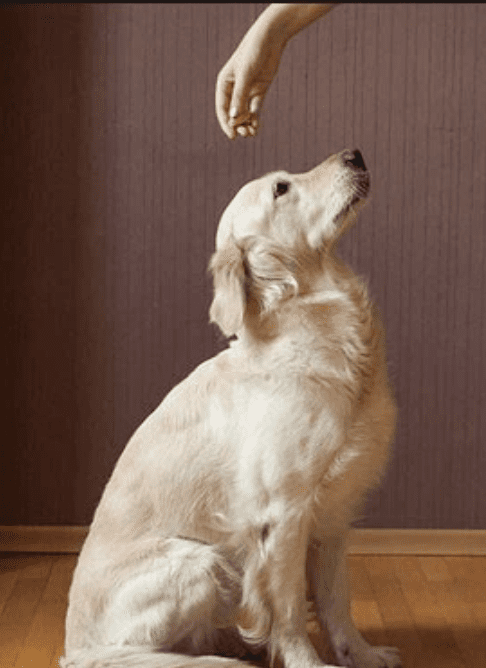
Puppy Obedience Training – Sit
This is one of the easiest dog obedience commands to teach, so it’s a good one to start with.
Hold a treat close to your dog’s nose.
Move your hand up, allowing his head to follow the treat and causing his bottom to lower.
Once he’s in sitting position, say “Sit,” give him the treat, and share affection.
Repeat this sequence a few times every day until your dog has it mastered. Then ask your dog to sit before mealtime, when leaving for walks, and during other situations where you’d like him calm and seated.
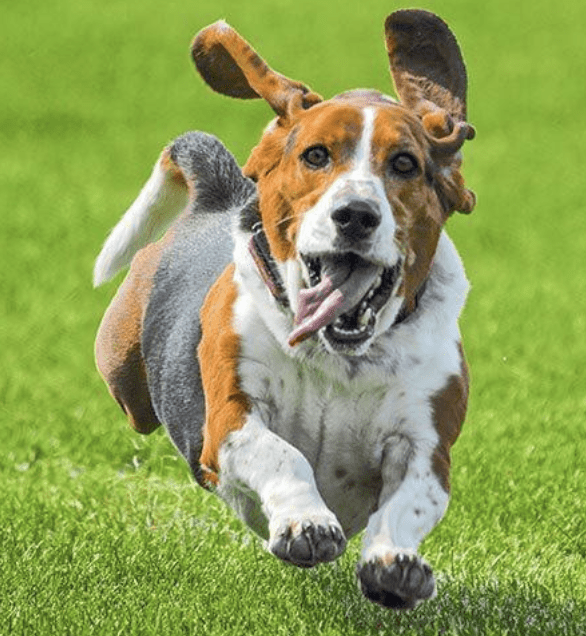
Puppy Obedience Training – Come
This command can help keep a dog out of trouble, bringing him back to you if you lose grip on the leash or accidentally leave the front door open.
Put a leash and collar on your dog.
Go down to his level and say, “Come,” while gently pulling on the leash.
When he gets to you, reward him with affection and a treat.
Once he’s mastered it with the leash, remove it — and practice the command in a safe, enclosed area.
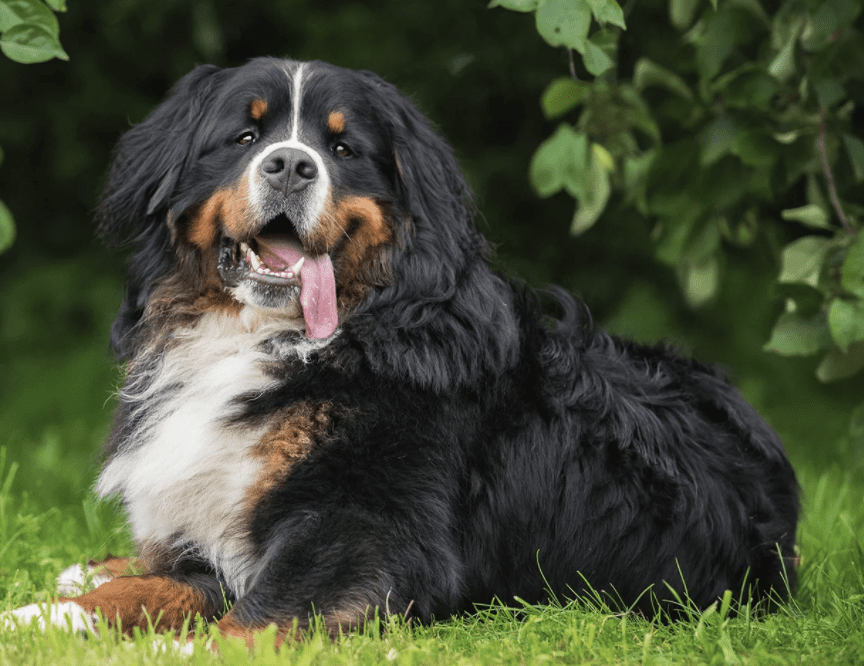
Puppy Obedience Training – Down
This can be one of the more difficult commands in dog obedience training. Why? Because the position is a submissive posture. You can help by keeping training positive and relaxed, particularly with fearful or anxious dogs.
Find a particularly good smelling treat, and hold it in your closed fist.
Hold your hand up to your dog’s snout. When he sniffs it, move your hand to the floor, so he follows.
Then slide your hand along the ground in front of him to encourage his body to follow his head.
Once he’s in the down position, say “Down,” give him the treat, and share affection.
Repeat it every day. If your dog tries to sit up or lunges toward your hand, say “No” and take your hand away. Don’t push him into a down position, and encourage every step your dog takes toward the right position. After all, he’s working hard to figure it out!
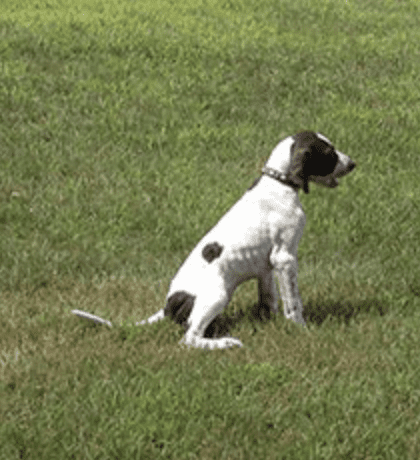
Puppy Obedience Training – Stay
Before attempting this one, make sure your dog is an expert at the “Sit” command.
First, ask your dog to “Sit.”
Then open the palm of your hand in front of you, and say “Stay.”
Take a few steps back. Reward him with a treat and affection if he stays.
Gradually increase the number of steps you take before giving the treat.
Always reward your pup for staying put — even if it’s just for a few seconds.
This is an exercise in self-control for your dog, so don’t be discouraged if it takes a while to master, particularly for puppies and high-energy dogs. After all, they want to be on the move and not just sitting there waiting.
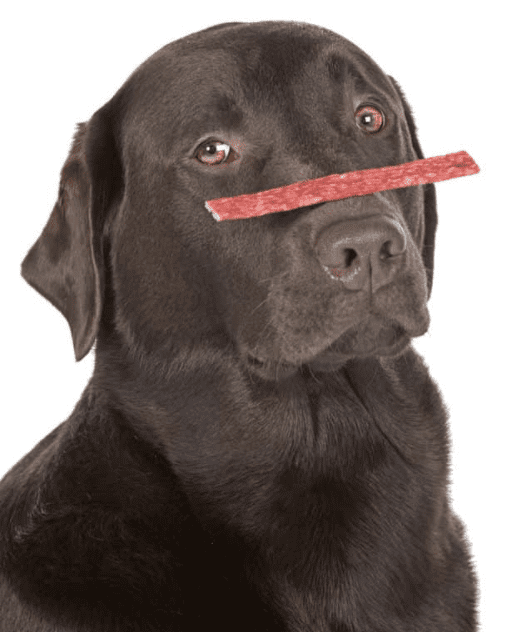
Puppy Obedience Training – Leave It
This can help keep your dog safe when his curiosity gets the better of him, like if he smells something intriguing but possibly dangerous on the ground! The goal is to teach your pup that he gets something even better for ignoring the other item.
Place a treat in both hands.
Show him one enclosed fist with the treat inside, and say, “Leave it.”
Let him lick, sniff, mouth, paw, and bark to try to get it — and ignore the behaviors.
Once he stops trying, give him the treat from the other hand.
Repeat until your dog moves away from that first fist when you say, “Leave it.”
Next, only give your dog the treat when he moves away from that first fist and also looks up at you.
Once your dog consistently moves away from the first treat and gives you eye contact when you say the command, you’re ready to take it up a notch. For this, use two different treats — one that’s just all right and one that’s a particularly good smelling and tasty favorite for your pup.
Don’t rush the process. Remember, you’re asking a lot of your dog. If you take it up a notch and he’s really struggling, go back to the previous stage.
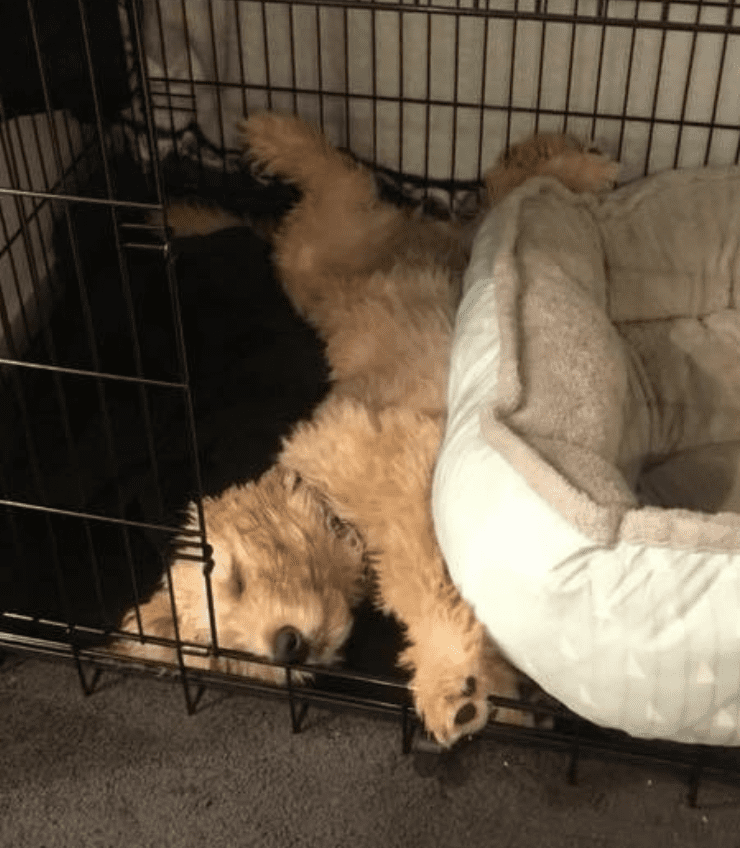
Puppy Obedience Training – Crate
Choose a low-traffic, quiet location for the crate so he can escape to it for a nap during your next holiday party or loud day with the kids.
Prepare the crate. Select a crate that’s large enough for your dog to comfortably lie down and stand up but no more. Place a comfy blanket inside to make it more enticing and leave it sitting with the door open in a spot where your dog can see it and check it out.
Set aside any negative feelings you have about placing your dog in a crate. Dogs are extremely sensitive to our emotions, and if you’re stressed about crating your dog, he will be too. Don’t begin training until you can do it from a calm, relaxed and happy place.
Prepare your dog. Allow him a chance to relieve himself so he won’t be distracted by the need for a bathroom break.
Build positive associations. Begin by placing treats and maybe a favorite toy or two near the opening of the crate. Praise your dog when he goes near the opening to retrieve an object or treat.
Try closing the door. Start by closing it just for a second before opening it and letting him out again. This will show your dog that he can trust you to let him out again. Do not push your dog in with your hand or the door. When letting your dog out of the crate, wait until your dog is sitting and not touching the door. Open the door and then allow your dog to get up and exit calmly.
Don’t rush the process. Remember, you’re asking a lot of your dog. If you take it up a notch and he’s really struggling, go back to the previous stage.
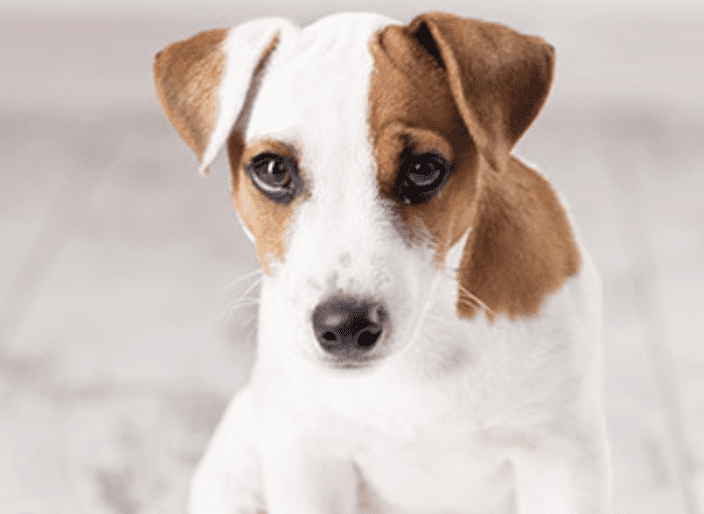
Puppy Obedience Training – No
Teaching and training your dog to learn the ‘no’ signal can be done with dog-training discs (unless your dog has a very nervous disposition or is easily frightened by sudden noises). These are five metal discs, a little like mini cymbals, joined together on a key fob. You can hold them silently, but at the precise moment you need to say ‘no’ they can be dropped to make a unique sound your dog isn’t likely to hear anywhere else.
To teach ‘no!’ first get some treats. In the same way that you would teach the dog to associate the click with a treat, you now need to teach them that the sound of the discs means they won’t be allowed a treat.
Place a treat on the floor. When your dog goes to eat it, rattle the discs in your hand. Remove the treat as you rattle the discs but say nothing – let the sound do the work.
Over a few repetitions, your dog should stop being startled by the sound and will begin to associate the sound with not getting a reward. Eventually, they won’t even attempt to take the treat, anticipating the sound, and give up, looking disappointed.
Now get them to perform another action, such as a ‘sit’, and give them a treat. This will make up for their previous disappointment and frustration!
Soon your dog will associate their actions where the discs are involved as a ‘fail’, and will stop trying without you having to use the discs, and instead just the word ‘no’.
Set Your Puppy Up For Success – Puppy Health Concerns
Refusal to eat can lead to low blood sugar levels or hypoglycemia. This condition is particularly dangerous for young dogs, especially toy breeds such as the Chihuahua and Pomeranian. It’s common for new puppies to refuse food on the first day. However, you should contact your veterinarian if your puppy won’t eat by the second day, or if he shows signs of health problems, such as diarrhea, sneezing or whimpering.
TIP: Schedule an initial checkup within a few days of bringing your new puppy home, even if he appears healthy.
New dog owners should take the time to learn the signs of potential health problems that might develop as a puppy matures into an adult dog. Here are some of the conditions to watch for:
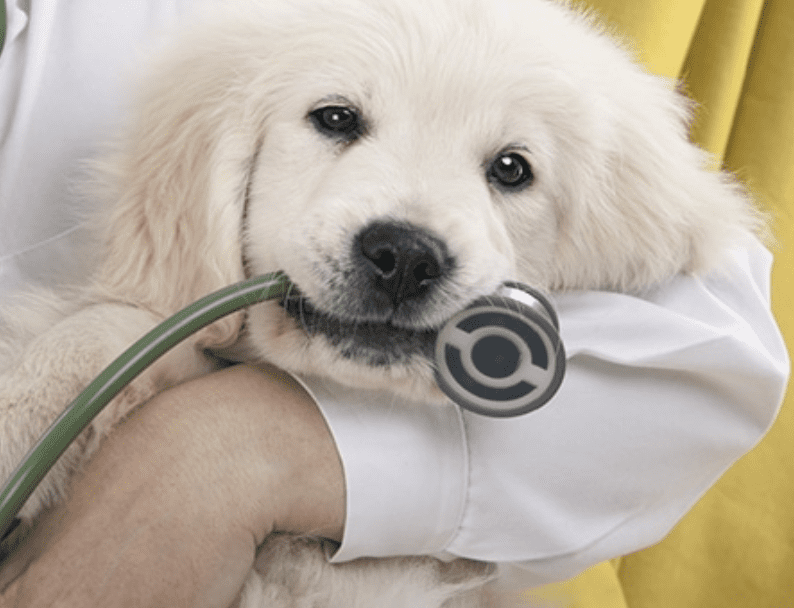
Allergies
In dogs, allergies often show up as skin conditions, itchy ears, head-shaking, scratching, or bald or raw spots, though they can also cause runny eyes and nose, sneezing, coughing, vomiting, and diarrhea. Dogs can be allergic to many of the same things people can: dust, pollen, grasses, mold, flea bites, and many foods. If you think your dog has an allergy, talk to your vet about how to determine what she’s allergic to and what you can do.
Anal Sac Conditions
Anal sacs are tiny organs, on either side of the lower half of the dog’s anus, which produce a liquid thought to help dogs mark their territory. The ducts that lead from the sacs to the anus can become blocked or infected. If your dog starts scooting his bottom along the ground and licking his anus, this may be the reason. Your vet can clear the ducts or show you how to squeeze the glands yourself.
Bloat
Gastric dilatation volvulus is a very serious condition that can rapidly kill an otherwise healthy dog. The stomach inflates (usually with gas or fluids) beyond its normal size, twists around, and can press on the major arteries of the torso, disrupting blood flow, and sending the dog into shock.
It can be precipitated by exercise two or three hours after a large meal or drinking large amounts of water. Signs include distended abdomen, excessive drooling, dry retching, restlessness, and depression.
Signs of shock are weak pulse, rapid heart rate, pale gums, or short, rapid breathing. If you suspect bloat or shock, take your dog to the vet immediately. Large breeds and breeds with deep chests tend to be susceptible. Feed your dog several small meals throughout the day and restrict water intake and exercise soon after eating.
Colitis
Colitis is an inflammation of the colon or lower bowel and has many different causes, from bacterial infections to allergies. Since causes vary, so do symptoms and treatments. Generally, you might see feces with mucus or blood in it, bloody diarrhea, or unproductive straining after passing feces. Severe dehydration can kill a dog quickly, so immediate veterinary care is crucial.
Diabetes
When the body stops making insulin or stops responding to it, it can no longer process sugars in the blood efficiently. The kidneys will release sugar into the dog’s urine, which makes her urinate more and have to drink more. The primary symptoms of diabetes are excessive drinking and urination, sometimes accompanied by weight loss despite increased appetite, or blindness or numb limbs. Treatment is available, and early detection is crucial.
Dysplasia
Usually in the hip or elbow, dysplasia is a deterioration of the joint. A loose or ill-fitting joint will cause damage and a resulting immune response within the joint. Stiff movement, pain or slowness getting up, or swollen joints are symptoms. Consult your breeder and vet about the possibility of dysplasia and what can be done to help.
Epilepsy
Dogs can have seizures just like people, and the causes can be varied. There are several stages of a seizure, which in dogs are generally expressed (to varying degrees) in these ways: changes in mood or behavior, sometimes for several days before a seizure; the “aura,” which signals the start of the seizure, can include nervousness, whining, trembling, salivation, excessive affection, wandering, restlessness, hiding, and general apprehension; the seizure itself, lasting a few seconds to a few minutes, in which the dog may fall to the ground, lose consciousness, gnash teeth, thrash his limbs, bark, paddle his feet, and lose control of his bladder and bowels; and the “anelean” stage, after the seizure, in which the dog may pace, become temporarily blind or deaf, and eat or drink excessively. If you suspect your dog may have had or be having a seizure, consult your vet.
Heart Disease
There are many types of heart disease, but symptoms to watch out for include coughing, weight loss, pale mucous membranes, palpable vibrations of the chest wall, exercise intolerance, episodes of passing out, accumulation of fluids anywhere in the body, and abnormal heart sounds such as a heart murmur.
Obesity
Obesity is just as dangerous for dogs as it is for humans. Fat dogs are at higher risk in surgery, more prone to injury, as well as to metabolic disorders such as diabetes, and have more stress on their heart, lungs, liver, kidneys, stomach, intestines, and joints. Consult your vet about a reasonable diet for your dog.
Resources to Set Your Puppy Up For Success
Resources for Bernese Mountain Dogs
More on Bernese Mountain Dogs >>
Bernese Mountain Dog Videos >>

